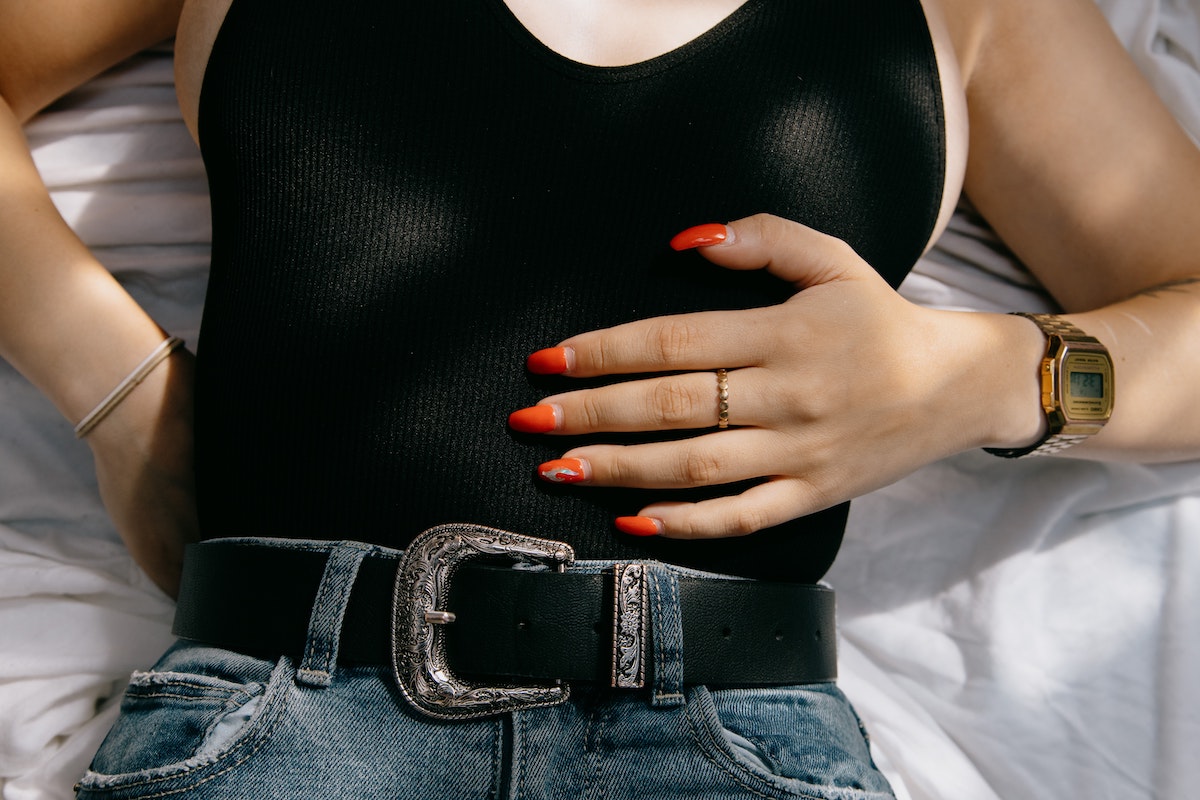Remember that time Kim Kardashian-West attended the 2019 Met Gala and people thought she had a rib removed?
When the famous reality star arrived at the Met Museum, she initially wowed the audience with her “wet look” and eventually shocked them with her “snatched-waist” look. Her cinched waist was so tiny and anatomically confusing that even the people who looked up to Kardashian-West as a source of inspiration were perplexed.
The internet just had to ask: “How in the world did Kim Kardashian do that?”
A custom waist trainer for women — nay, for Kim — is the secret behind the look. Mrs. Kardashian-West wore a custom Mr. Pearl corset under her silicone gown by Thierry Muggler. In her interview with WSJ Magazine, the reality star said the custom waist cincher was so tight, she had to take breathing lessons so she could rock the look without draining her oxygen levels.
This isn’t the first time Kim and her sisters advocated for the debatable waist trainer made for women.
The Kardashian-Jenner clan is infamous for promoting the “snatched-waist” look by wearing waist trainers for hours, usually more than the recommended amount of time. Some of them even wear waist trainers post-birth, which sparks the debate of “Should women wear waist trainers after giving birth?” Despite these debates, the Kardashians and other celebrities head the waist trainer bandwagon via their social media endorsements.
Many people are interested in jumping aboard this train but many are also asking, “Do waist trainers work? Are waist trainers safe for women?”
Understanding Waist Cinchers: What is a Waist Trainer?
A waist trainer is a piece of clothing made with thick fabric and metal boning, which is often worn around the middle section of your body. Also known called a “waist cincher,” this clothing item is cinched up with Velcro, hooks or laces.
Unlike shaping underwear or a girdle, you have to wear your waist trainer tightly to achieve a smaller and sleeker-looking waist. While you can immediately see hints of pretty girl curves once you’ve worn the waist trainer, you need more “training” to see semi-permanent changes.
The waist trainer for women you know today is a descendant of the old corset. Corsets have been shaping women’s waists for more than five centuries. Originally, these waist cinchers hid a woman’s body shape between her hips and breasts. During the 1800s, they started accentuating the shape of the body, giving the wearer the prized hourglass shape of curvy hips and a small waist.
What are the Supposed Benefits of Wearing Waist Trainers?

So what can a waist trainer supposedly do for women (or for anyone who wears them regularly)?
Hourglass Figure
The immediate transformation that comes with wearing a waist cincher is immediate and impressive. A running theory among waist trainer enthusiasts is that you can train your waist to maintain your hourglass figure.
However, a blog from the American Board of Cosmetic Surgery (ABCS) reveals that a waist cincher will not drastically change the shape of your body. Even if your body type can temporarily adopt the hourglass figure, you are unlikely to enjoy permanent effects.
Weight Loss
One of the selling points of waist trainers is how they can help you temporarily lose a small amount of weight. But this could be due to the fluids you lose due to perspiration, something that can happen when you wear a waist trainer designed for sweating.
You may also eat less since the waist trainer is compressing your stomach.
A 2010 study assessed the cost-effectiveness and feasibility of weight loss on a low-calorie diet accompanied with the regular wearing of waist trainers. According to the study, the low-calorie diet is effective at helping you lose weight, even after a year. However, they were unable to evaluate the effectiveness of wearing a waist trainer since most of the participants stopped wearing them because they weren’t comfortable.
Better Posture
Wearing a waist trainer is helpful for women who struggle with bad posture. The stiff “backbone” of the corset encourages you to sit or stand straight. But if you wear your waist cincher too much, you might weaken your core muscles, which can cause back pain.
But Do Waist Trainers Actually Work?
Judging from the benefits listed above, waist trainers work on some level. They can give you an hourglass figure as long as you’re wearing them. They can help you sit straighter or look like you’ve had good posture since birth. Some people are even motivated to do better with their exercise and diet by using their waist trainers
However, most of the results are short-term. If you want to look better in a particular outfit, a waist trainer can help you achieve the look temporarily.
Prolonged wear of waist trainers increase your risk for the following:
Restricted Air Flow
Waist trainers keep your diaphragm from doing its job, which can negatively impact your fitness routine and your overall wellness. When you wear a waist cincher, it covers the bottom part of your ribs while pulling it up high, which gives the illusion of an hourglass shape. However, the constriction in the rib cage makes it difficult for the user to breathe properly.
When you compress your diaphragm, you’re inhibiting its function. For your diaphragm to work properly, your abdomen needs the space to expand to accommodate the contraction.
Pressured Internal Organs
For organs to function well, they need to move. Applying too much pressure on your internal organs can aggravate them, which causes undue stress. In general, your abdominal muscles will protect your intestines, stomach and other gut organs, so when you have anything compressing your organs, your muscles will take the force to protect your intestines.
Still, excess pressure applied to your internal organs will lead to consequences, mostly muscular. Your muscles, particularly the core, will begin to shut off since waist trainers restrict the range of motion.
Digestive Issues
Long-term use of waist trainers causes digestive issues like gastroesophageal reflux (GERD). When you wear a waist trainer for long, you’re not just squeezing fat and skin, you’re crushing your digestive system as well. This includes your stomach, esophagus and intestines.
The pressure forces your stomach to back up the acid into your esophagus, which can cause GERD or heartburn.
How Long Should a Beginner Wear a Waist Trainer?

Quick and easy is never the way to go with waist training. If you want to lose some inches by waist training, start slowly. Your cincher needs time to break in. Plus, your body also needs time to adjust. Start with a looser fit for one to two hours a day.
At the same time, complement your waist training efforts by maintaining a fit and healthy lifestyle.
What are the Best Waist Trainers For Women?
Waist cinchers are available in all shapes and sizes. There are also waist trainers for plus-size women and for women on the thinner side. But in general, there are four main types of waist training garments with each style designed for different goals, outfits and lifestyles.
When selecting the best waist trainers for women, your options are:
- Latex waist trainers. These flexible and versatile garments are ideal for daily use. They also look great under any attire. Some latex waist trainers are made for sweat absorption, too.
- Performance waist trainers. These waist trainers are ideal for active use — during runs, workouts, sports and more. These are designed to handle sweat and movement. They can also trim down a couple of inches from your waistline temporarily (up to three inches, in some cases). At the same time, they increase perspiration to your core, which maximizes your energy for physical activity. If you’re looking for a waist trainer for sweating, this is it.
- Steel-boned corsets. If you want the most dramatic results, a traditional corset constructed with steel can help you out.
- Cotton waist trainers. Cotton-based trainers are perfect for women looking for something softer and kinder to their bodies. A cotton waist trainer is ideal for people with sensitive skin, too.
Celebrities like the Kardashian-Jenner clan may have convinced you that a smaller waist is achievable with regular waist training. On some level, waist training does help but there’s no reason to risk your health to achieve a smaller waist. Just ask body-positive actresses like Amy Schumer.
If you want long-term results, changes in diet and exercise will help. If you are decided to try out waist trainers, try one that isn’t too tight or painful.




